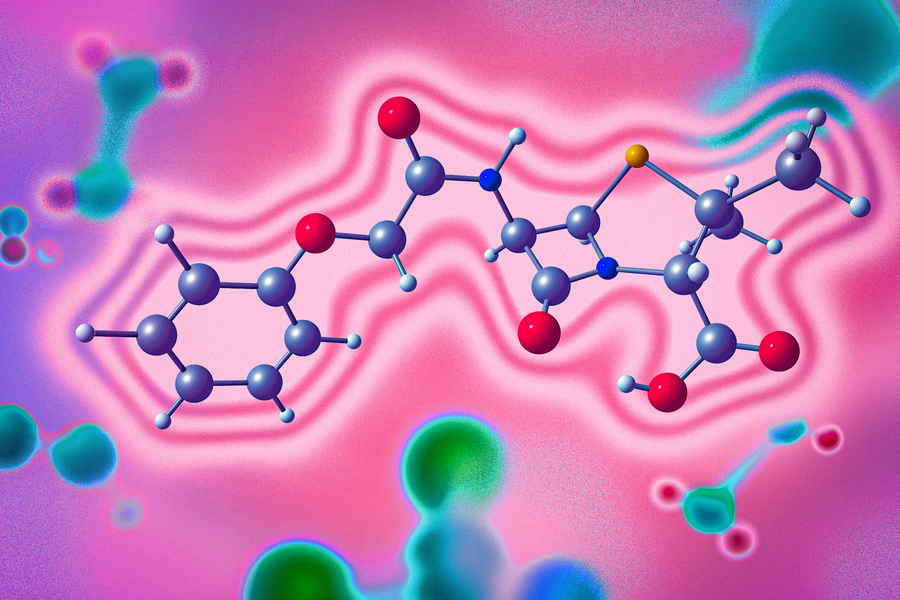2024-06-27 マサチューセッツ工科大学(MIT)

A new way to drive chemical reactions could generate a wide variety of drugs containing azetidines, like Penicillin does.
Image: Jose-Luis Olivares, MIT; iStock
<関連情報>
- https://news.mit.edu/2024/scientists-use-computational-modeling-for-difficult-chemical-synthesis-0627
- https://www.science.org/doi/10.1126/science.adj6771
可視光を利用した非環状オキシムとアルケンのアザパテルノビュキ反応によるアゼチジンの合成に成功 Visible light–mediated aza Paternò–Büchi reaction of acyclic oximes and alkenes to azetidines
EMILY R. WEARING, YU-CHENG YEH, GIANMARCO G. TERRONES, SEREN G. PARIKH, […], AND CORINNA S. SCHINDLER
Science Published:27 Jun 2024
DOI:https://doi.org/10.1126/science.adj6771
Editor’s summary
Azetidines are saturated four-membered rings comprising three carbon centers and a nitrogen center. A seemingly intuitive way to make them would be to pair up the double bonds in an alkene (C=C) and an imine (C=N) using light, in analogy to the photocoupling of two alkenes to cyclobutanes. However, this approach has proven surprisingly constrained to specialized substrates. Wearing et al. report that modifying the electronics of the imine through oxime formation enables a more general photosensitized coupling with styrenes. —Jake S. Yeston
Abstract
The aza Paternò–Büchi reaction is a [2+2]-cycloaddition reaction between imines and alkenes that produces azetidines, four-membered nitrogen-containing heterocycles. Currently, successful examples rely primarily on either intramolecular variants or cyclic imine equivalents. To unlock the full synthetic potential of aza Paternò–Büchi reactions, it is essential to extend the reaction to acyclic imine equivalents. Here, we report that matching of the frontier molecular orbital energies of alkenes with those of acyclic oximes enables visible light–mediated aza Paternò–Büchi reactions through triplet energy transfer catalysis. The utility of this reaction is further showcased in the synthesis of epi-penaresidin B. Density functional theory computations reveal that a competition between the desired [2+2]-cycloaddition and alkene dimerization determines the success of the reaction. Frontier orbital energy matching between the reactive components lowers transition-state energy (ΔGǂ) values and ultimately promotes reactivity.



